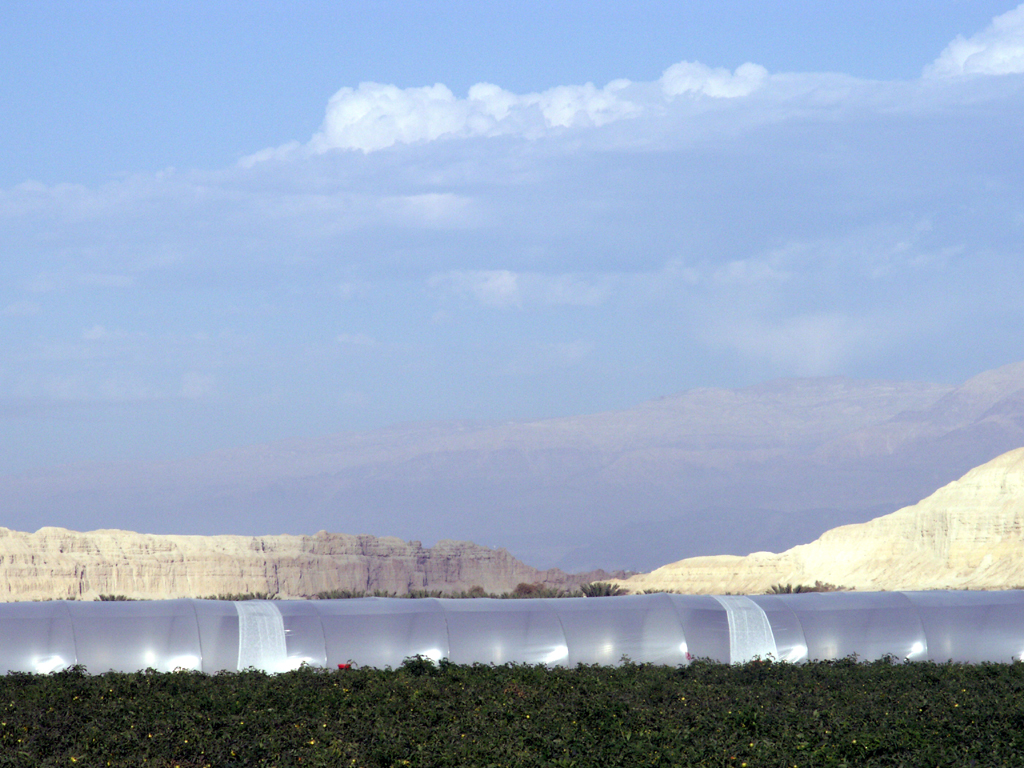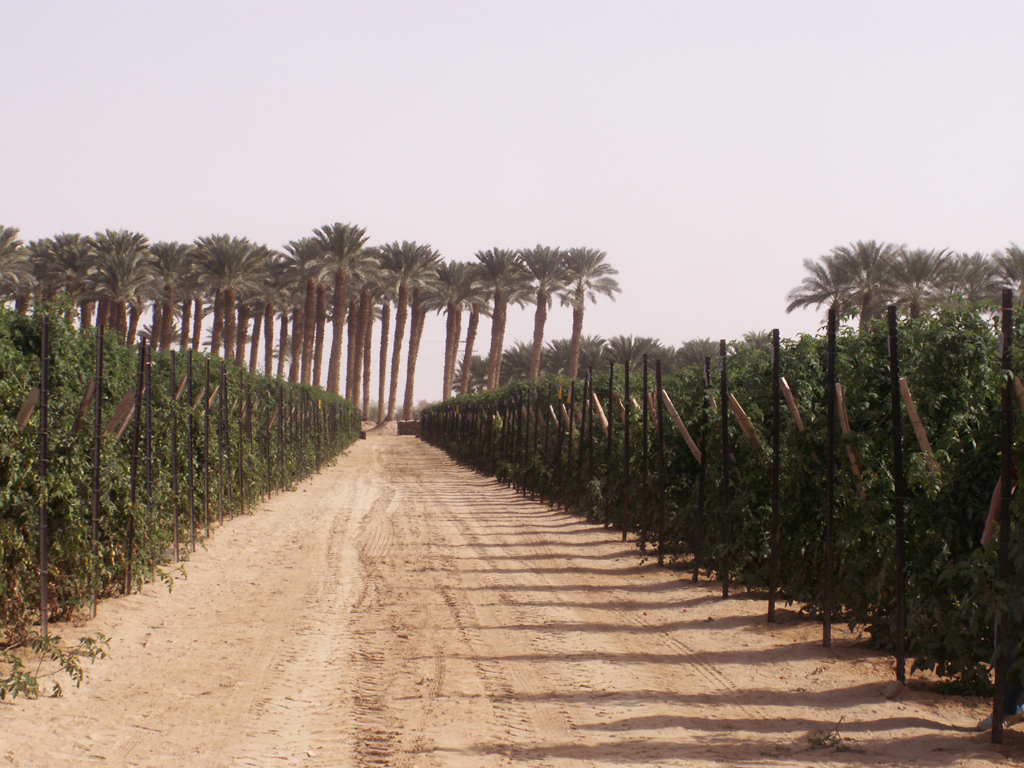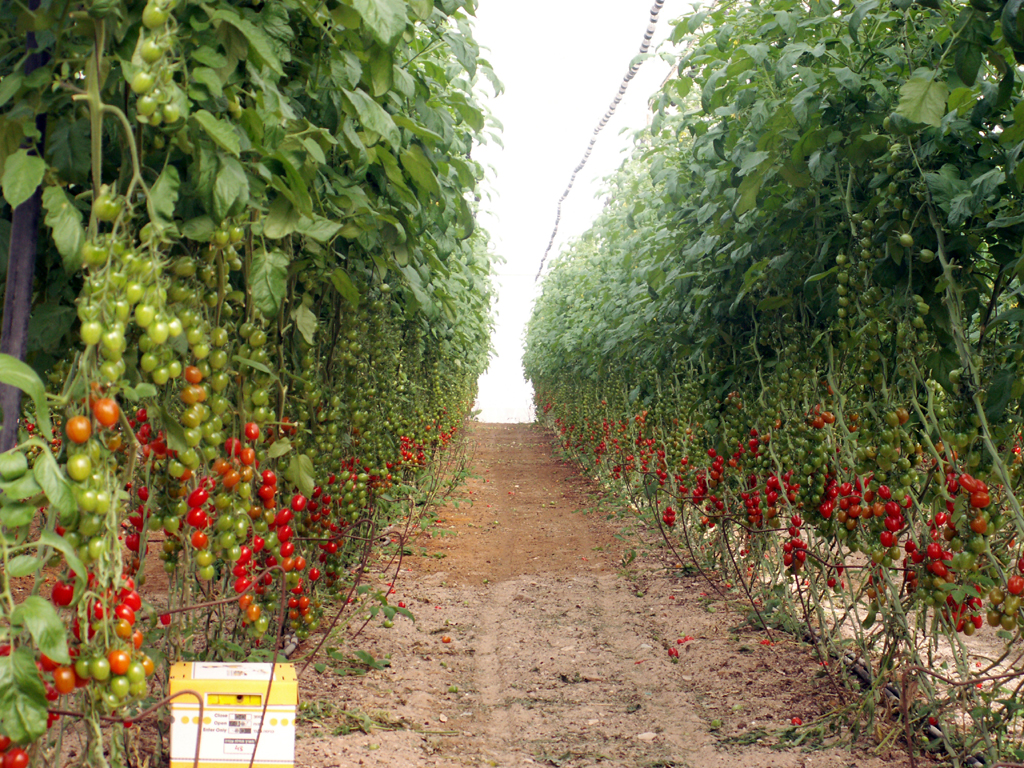A Feature Report
5 April 2007
International Atomic Energy AgencyArava Valley, Middle East -- Their
people share an agricultural valley, and now they share the
fruits of partnership – to the tune of millions of dollars every
year.
Scientists, politicians, and farmers from
Israel, Jordan, and the Palestinian Authority are winning a long
and largely invisible fight against the odds. Their common foe:
the Mediterranean fruit fly, or Medfly, one of the world's most
destructive agricultural pests. Among their allies: the IAEA, UN
Food and Agriculture Organization (FAO) and tools of nuclear
science and technology.
At a military checkpoint between Israel and
Jordan in the Arava Valley, a precious cargo is traded.
One-hundred-and-fifty-thousand sterilized male flies. Trapped in
a dozen brownpaper bags, they buzz as they pass from Israeli to
Jordanian hands.

©
AgriSupportOnline
Later that day, a plane loaded with seven
million flies will make a two hour flight from the Red Sea to
the Dead Sea. It is the only plane authorised to tick-tack
between the two countries in this region where military "no-fly
zones" typically rule.
Twice a week, Steve Carrigan becomes the
friendly "fly bomber", releasing swarms of sterile male flies by
air to overrun the Mediterranean Basin´s shared Valley. The
Medflies are commercially bred for birth control; their mating
yields no offspring. If left to multiply in the wild, Medflies
would wreak havoc on citrus and other fruit, quickly turning
crops into infested mush.
|
|
Scientists call the pest-control
technology the sterile insect technique (SIT). It is an
environmentally friendly method, with a basic "birds and
the bees" concept. No offspring means a dwindling fly
population over time, through systematic and targeted
campaigns combined with other strategic measures on an
area-wide basis.
That's what is happening in the Arava
Valley. The ultimate goal is eradication from the
Valley. |
"We´re using a pest to fight a pest," says
Jordan's Minister of Agriculture, Mostafa Qrunfleh.
"Together with partners, we're winning." The IAEA and
FAO have supported the project since the mid-1990s.
For Israeli farmer Ezra Ravins, success means
he can sell his bell peppers to lucrative export markets like
the
USA where imported fruit and vegetables must come from
fruit-fly-free zones. The bell peppers are grown inside enormous
greenhouses - cool oases of reds and orange on lush green plants
- that dot the desert landscape. Mr. Ravins says the SIT
programme helped to convince tough European and US regulators
that his produce is free of infestation.
Business is booming for the "clean" fruit.
Bell pepper production in the Arava Valley has grown a hundred
times since the programme started, from less than $1 million a
year in 1998 when the programme started to $120 million in
exports last year. Pesticide use has fallen.
Across the valley in Jordan, Abdullah
Ja'afreh sees his fruit farm production rising. He and other
growers are exporting to their Gulf neighbours and entering
Eastern European markets. Yields have improved and there's
better quality fruit for the local market.

©
AgriSupportOnline
"The Medfly is not the big problem it once
was. Ten years ago you would see infestation on guavas. Now
not," Mr. Ja'afreh says.
The IAEA and FAO first helped to set up pilot
projects and supply sterile male Medflies to Israel and Jordan
in 1998, four years after Israel and Jordan signed a peace
treaty and related cooperation agreements. The Palestinian
Authority joined the partnership one year later, and now has the
capacity to adopt the technology. The IAEA funded the
partnership for many years, and so did the USA, including a
four-year, $2.5 million grant.
The sterile flies are bred in a commercial
mass-rearing facility in Israel called Biofly. Among the
specialists there is Inbar Shouster-Dagan, who was trained on
mass-rearing techniques at the IAEA's Seibersdorf Laboratories
and in Chile. She says that 20 million sterile male flies are
produced there each week and released into the wild.
Plans today are to expand the science
alliance. In the Gaza Strip, Palestinian fruit growers already
have placed bulk orders for sterile Medflies, and hopes are high
that the SIT project can resume as political conditions allow.
Interest is strong in other areas of Israel
and Jordan. In Ashqelon near Gaza, Michael Noy manages fruit and
vegetable farms with a $200 million annual turn-over. He also
wants to benefit from SIT-based campaigns. "Every year more and
more chemicals are banned," Mr. Noy explains. "Ten years
from now there may be no other option. Consumers want quality
fruit."
Farther north, beyond the Arava Valley in
Jordan, the story is much the same. Farmers rely heavily on
pesticides to control Medflies and other pests. Even so, Ahmad
Mustafa Massadeh complains that the Medfly destroys about 25% of
his crop.

©
AgriSupportOnline
Mary Bahdousheh coordinates the Medfly
project in Jordan, as the Head of Agricultural Pest Control.
Unlike the mistrust clouding the Medfly partnership with Israel
in the mid-1990s, years of cooperation and communication since
then have paid off, she says. With the IAEA's help, Ms.
Bahdousheh brought Jordanian farmers like Isac Medanat across
the border to see first-hand what was happening on the Israeli
side of the Valley, and to speak with experts and their farming
neighbours.
A prime focus today in Jordan is making sure
that bustling cities like Aqaba in the south do not become
potential "hot spots" for Medfly outbreaks that could place
Valley harvests in the north at risk. Jordanians like to grow
fruit trees, like kumquat and lemon, in their gardens, and
pest-control and monitoring programmes have to be strict in
urban areas.
"An outbreak would be a disaster for
commercial orchards," says Jean-Pierre Cayol, an entomologist
and the IAEA programme management officer for the Medfly
technical cooperation project in the Middle East.
For the region's agricultural leaders, the
success of the Medfly project feeds hopes. "As much as this may
sound remarkable, the Medfly acts as a bridge to peace,"
Israel's Minister of Agriculture, Shalom Simhon, says. "We're
working together to protect our shared region." -- Kirstie
Hansen, IAEA Division of Public Information |